- Intro
- What is a 3D modeler?
- What does a 3D modeler do?
- What is 3D modeling?
- Types of 3D models
- How to make a 3D model?
- What is 3D modeling used for?
- Architecture and interior design
- 3D modeling for video games
- Films
- Advertising and marketing
- Production
- 3D modeling for animation
- The medicine
- 3D printing
- Pros and Cons to be a 3D modeler
- Do 3D modelers get paid well?
- What do you need to be a 3D modeler?
- 3D modeling software
- 3D modeling career path and perspectives
- How to become a 3D modeler?
- 3D modeling schools and classes
- 1. CG Spectrum
- 2. Skillshare
- 3. Autodesk Design Academy
- 4. Coursera
- 5. 3DTraining
- 3D modeler resume templates
- Conclusion
Intro
With the development of digital technologies, many professions have appeared related to the creation of visual content: computer graphics, special effects, and virtual reality objects. One of these careers is a 3D modeler. The realism of game characters, heroes of fantasy films, and spaceships from the future is achieved through the long and painstaking work of 3D graphics professionals – 3D modelers. When you need to depict fictitious or real objects on the screen in volume, 3D modeling and animation specialists are called to help. In this article, we will not only tell you in detail what a 3D modeler is and how to get into 3D modeling, but also reveal to you the secrets of how to create 3D models, and much more that may be useful to you.
What is a 3D modeler?
A 3D modeler is a specialist who, based on real and fictional objects, builds their visual models with the considering of every detail: from sizes and bends to all the roughness and flaws of the modeled object. An expert in this field can create a design 3D model of any complexity, from models of furniture and architectural structures to 3D figure models.
A 3D modeler is the first link in creating a 3D graphics object. That is why the task of a 3D modeling artist is to develop such a database of objects/characters, which will be convenient to work with in the future.
For each project, first working sketches with views of facades or with images of a character are created, approved by the customer, and only then the object is modeled according to these drawings. The created model has to be as close as possible to the sketch. In many studios, 3D modelers draw the sketches themselves, so the ability to draw by hand can be a big plus or a prerequisite for hiring.
Want to know what is the difference between 3D modelers and 3D artists? So, follow the link and learn more about the 3D artist career.
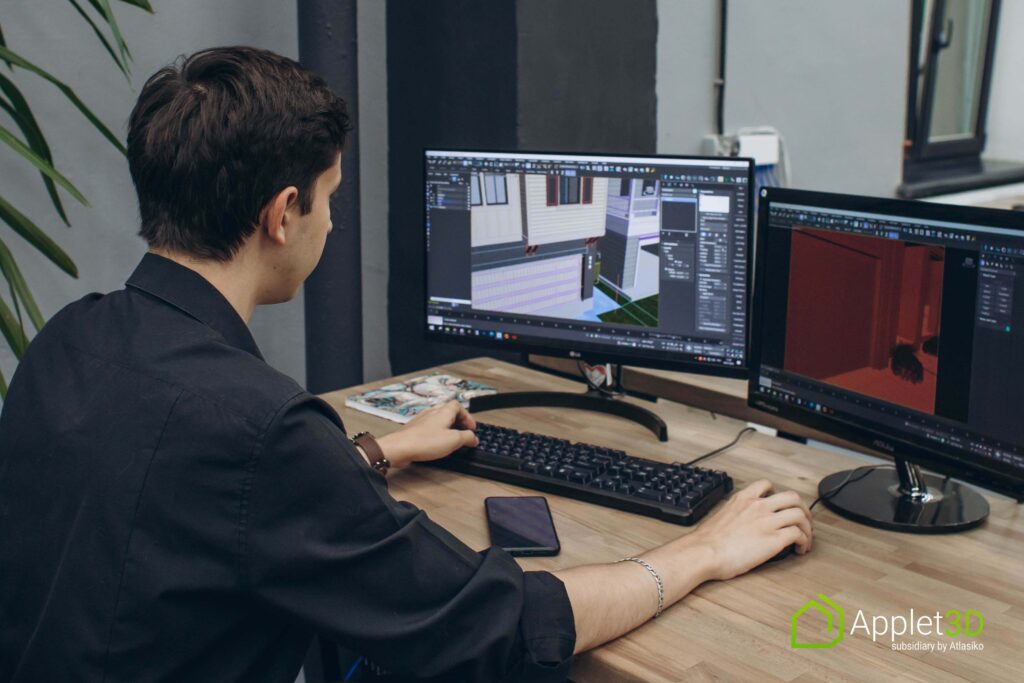
What does a 3D modeler do?
3D modelers are in demand in many industries, including the creation of games, films, advertising, architecture, decor, furniture, and various equipment. His tasks may vary depending on this area and the type of work the 3D modeler performs. Foremost, he is engaged in the development of 3D digital models of characters, objects, and environments, based on drawings, sketches, photos, concept art, etc. Making 3D models of objects realistic is a complex and hard-working process, requiring both creativity and attentiveness, and technical skills.
Also, the tasks of a 3D modeler may include:
- Creating UV maps for textures;
- Creation of a model skeleton (rigging) for subsequent animation;
- Texturing models, and setting materials;
- Optimization of models for mobile devices;
- Level design;
- Creation of 3D visualizations;
- Refinement and modification of current 3D models;
- Creation of simple animations;
- Interaction with developers and other team members (with 3D animator, 3D rigger, visualizer, production designer, texture artist, manager, etc.).
The master of 3D modeling knows how to create this or that object, to make it three-dimensional. In his work, he uses many techniques and knows perfectly graphic editors and other programs. His portfolio is full of 3D model images of various complexity and type. Check out how the interior can look like in 3D modeling and after rendering.
What is 3D modeling?
Let’s delve a little into the essence of 3D modeling art. 3D modeling means the creation of three-dimensional objects, invented or real. 3D digital modeling allows you to visualize an object that exists only in drawings, for example, a copy of a future building or an alien landscape. 3D modeling examples usage can be found in popular motion pictures. Consider the famous movie Star Wars. It is difficult to imagine those complex designs of spaceships. Their models for new episodes were created using 3D computer graphics. Or think of the landscapes in James Cameron’s 2009 film Avatar. That film helped transform the 3D industry when it used many 3D modeling concepts to create the planet Pandora.
According to Verified Market Research, 3D Mapping And Modeling Market size was valued at USD 3.64 Billion in 2020 and is projected to reach USD 13.15 Billion by 2028, growing at a CAGR of 17.44% from 2021 to 2028.
The basic digital 3D modeling process is to connect sets of points to lines and polygonal shapes to create wireframe models. Special techniques and software products for 3D modeling are used to build a three-dimensional model of an object. Techniques mean methods of forming a 3D graphic object – calculating its parameters, drawing a “skeleton” or a three-dimensional non-detailed form; extrusion, building up and cutting out parts, etc. In the 3D modeling process, a critical stage is rendering – converting a 3D digital model into a beautiful full-fledged image.
Types of 3D models
If you are interested in 3D modeling, you have probably met the terms high-poly modeling and low-poly modeling. This is one of the specifics of a modeler’s work. For example, in computer games, models are needed with the minimum possible number of polygons (low poly). So the character is created with the basic elements (arms, legs, torso, head), and the detail is added with the help of textures, in other words, is rendered. But in the case of animated 3D models (for 3D animation films), they must be highly detailed – models with many polygons (high poly), including all necessary elements such as nostrils, eyelids, lips, teeth, tongue, etc. A high-poly model can consist of tens of millions of polygons.
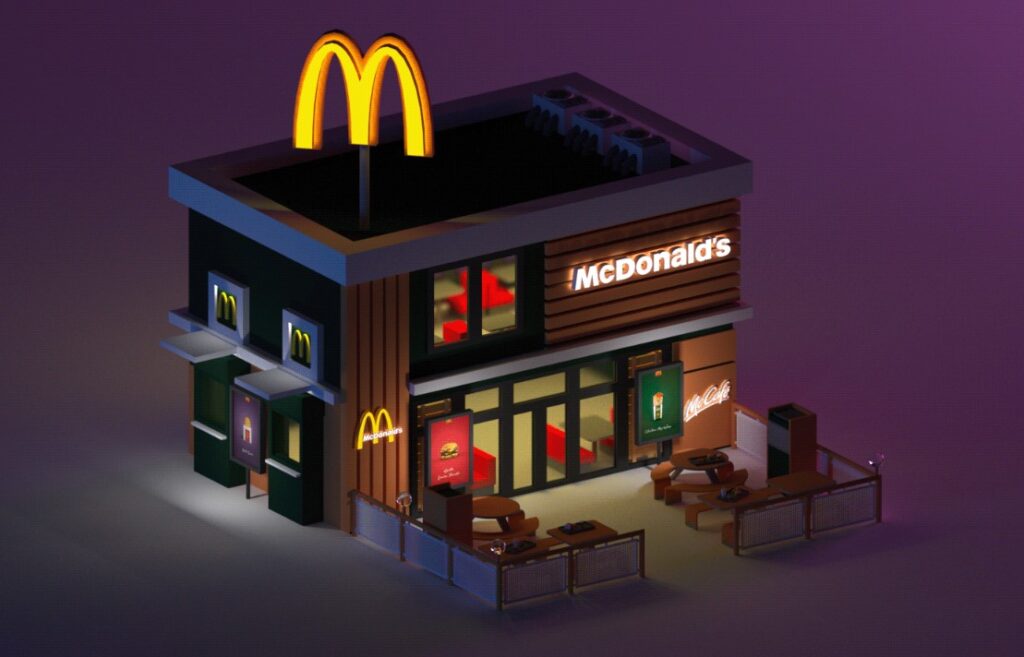
Low poly modeling
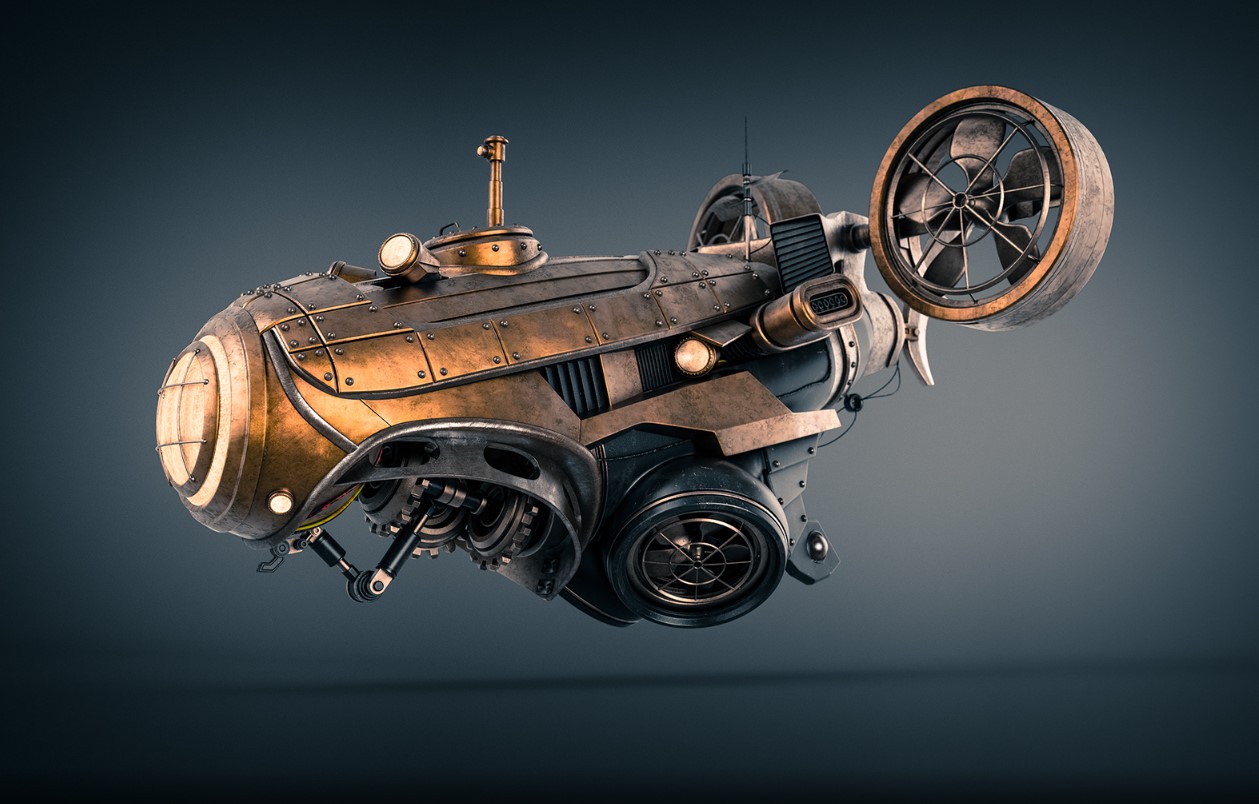
High poly modeling
If you are looking for an opportunity to purchase ready-made 3D models, 3DModels can help you with this. On the company’s website, you can find many realistic 3D models of various categories (such as cars, foods, plants, furniture, etc,) that can be used in visualizations, movies, video games, and AR applications. The model can be printed, added to the game, or placed on the wallpaper. If necessary, you can convert models to PSD or another format convenient for you.
How to make a 3D model?
So what is a 3D model? A 3D model is a three-dimensional digital image of a required object, both real and fictional. The creation of 3D models takes place with the help of special software for 3D digital modeling. Quality models can be further textured and rendered in 3D. Or they can go to a 3D printer and become part of real life. It all depends on the purpose of the digital object.
Designing 3D models have carried out in several stages:
1. Gathering information
At the first stage of 3D modeling, information is collected: sketches, drawings, photographs, and videos; in some cases, even a finished product sample is needed – in general, everything that will help to understand the appearance and structure of the object.
2. Modeling or creating model geometry
We are talking about creating a three-dimensional geometric model, without taking into account the physical properties of the object. The following methods are used for this:
- extrusion;
- modifiers;
- polygonal modeling;
- rotation.
3. Setting up lights and viewpoints
One of the most difficult steps in creating an art 3D model. Indeed, the realistic perception of the image directly depends on the choice of the tone of light, the level of brightness, sharpness, and depth of shadows. In addition, it is necessary to select an observation point for the object. It can be a bird’s-eye view or scaling the space to achieve the effect of being in it – by choosing a view of the object from a human height.
The model itself is already ready for further use – printing on a 3D printer, 3D milling on CNC machines, or any other prototyping method.
4. Texturing the object
The level of realism of the future model directly depends on the choice of materials when creating textures. Professional programs for working with three-dimensional graphics are practically unlimited in their possibilities for creating a realistic picture.
5. 3D visualization or rendering
3D model rendering is the final stage of 3D modeling. Render 3D models consist in detailing the settings for displaying an object. That is the addition of graphic special effects, such as glare, fog, radiance, etc; giving the image realism. In the case of video rendering, the exact parameters of the 3D animation of characters, details, landscapes, etc. are determined.
At the same stage, visualization settings are detailed: the required number of frames per second and the extension of the final video are selected. If you need to get a two-dimensional raster image, the format and resolution of the image are determined, mainly JPEG, TIFF, or RAW. Learn more about 3D rendering.
6. Post-production
Processing of 3D render models and animations with media editors – Adobe Photoshop, Adobe Premiere Pro (or Sony Vegas), Adobe After Effects Pro, Adobe Illustrator, etc. Post-production is to give the image original visual effects and make it as realistic as possible to interest potential buyers or investors.
What is 3D modeling used for?
Previously, 3D modeling was only used in areas related to creativity and design. As the digital world evolves, computer 3D modeling has become a necessary element in the work of one field or another. Here are some of them:
Architecture and interior design
Today, the creation of design 3D models of a building is an indispensable attribute of construction. Based on such a model, you can create a prototype of the building. Also, with the help of the room 3D model, the customer can see what his space will look like eventually.
3D modeling for video games
The video game industry is developing every day, such projects require tremendous efforts, and all objects in a video game are the result of the work of a 3D model designer. In professional programs, experienced specialists create concept art, manually draw 3D landscapes and character models, and animate created 3D objects. 3D figure modeling is a necessary element in the production of any game.
Films
The film industry today is about impressive special effects, also created by 3D modeling artists or VFX specialists, who invent and realize entire worlds. In addition, with the help of 3D computer graphics for films, individual 3D object models, and full-fledged landscapes are created.
Advertising and marketing
Three-dimensional graphics are indispensable for the presentation of the future product. Captivating digital 3D models of products that can be placed on commercial websites or large city billboards attract potential buyers. An animated 3D model allows you to show the product in the most favorable light, giving customers a chance to easily rotate it, zoom in, change colors, and much more.
Production
Manufacturing companies always design and model their products first before developing them. To start production, you need to draw and then create a 3D model object. And, already based on a digital 3D model, using rapid prototyping technologies (3D printing, milling, silicone mold casting, etc.), a realistic prototype (sample) of the future product is created.
3D modeling for animation
It is impossible not to mention modeling in animation. With the help of 3D graphics, you can create a character, “make” him move – animate it, and also, by designing complex animation scenes, create a full-fledged animated video. In other words, modeling is the initial step in creating animation. Characters and objects must be fully configured and completed before they can be edited and animated. There is 3D modeling software that can be used to create 3D animation models. But if you want to have a shot at this industry, you should look for specialized programs.
The medicine
The medical industry uses detailed 3D models of organs, including slices from CT scans or MRI scans.
3D printing
Computer 3D modeling is an integral part of 3D printing. This field requires a lot of hard work from 3D modeling artists, as models that are created for 3D printing need to be very detailed and meet many non-standard requirements.
Pros and Cons to be a 3D modeler
Pros
- In-demand profession in different spheres of activity
- High salary
- Creative work
- Ability to take and fulfill orders from anywhere in the world
- You can master the basic knowledge quickly enough
Cons
- You need to be able to work in several programs and editors, which will take time to master
- The work requires high concentration, diligence, attention, and patience
- To qualify for good pay, you need to have a large and impressive portfolio
- It is necessary to constantly improve your professional skills, as the industry is rapidly evolving
- High eye strain
Do 3D modelers get paid well?
The salary of a 3D modeler depends on the industry as well as the place of work. According to Glassdoor, the estimated total pay for a 3D modeler is $86,083 per year in the United States area, with an average salary of $56,535 per year. On the other hand, research by Zippia The Career Expert shows that 3D modelers make $71,154 per year on average, or $34.21 per hour, in the United States. 3D modelers’ average starting salary is $40,000. The highest paying states for 3D modelers are Connecticut, California, New York, Rhode Island, and Delaware.
States with the highest salary for 3D modelers
The top 10 highest paying cities for 3D modelers in the USA
What do you need to be a 3D modeler?
Professional 3D modeling artists are fluent in creating any 3D objects. Sometimes experts work more closely with a certain genre and style: cars, monsters, nature, technology, etc. A general-purpose 3D modeler is more likely to get a job, but specific and rare tasks may require a narrowly specialized one.
There are some professional skills you need to be a 3D modeler:
1. Drawing and modeling. A 3D model from the real world must fully correspond to reality. To do this, you need to be able to draw and sculpt. The ideas of artists also sometimes need to be refined, so the ability to draw comes in handy. And if you have chosen the path of a freelancer, being able to sketch by hand is a necessary skill to quickly showcase your idea or vision of future work for the customer.
2. Knowledge of anatomy. 3D modelers who create characters need to know anatomy. It does not matter if you are recreating a model of a real person or a fictional character – you need to correctly convey the appearance and proportions. These skills are taught in art schools and universities.
3. Technical knowledge. It is beneficial for a 3D modeler if he understands the technique he draws – then he is more independent of other specialists, and the customer can be sure of the accuracy of his work. It is especially important for 3D modelers who work in the field of industrial design: create models of machines, cars, and buildings. The same goes for movies and games, when it is needed to reproduce some kind of technical detail – it is desirable to know how it works.
4. Creativity and analytical thinking. One of the most essential traits inherent in 3D graphics professionals is creativity. Like drawing and animation, 3D modeling art requires a lot of imagination and out-of-the-box thinking to create extraordinary characters and worlds that stand out from the rest. Also, the modeler needs to analyze the information he receives from artists and customers.
5. Knowledge of the programs. Modelers work in special programs that allow you to recreate the object as accurately as possible: in compliance with volumes, sizes, and proportions. Knowledge of programs such as 3ds Max, Blender, AutoCAD, Maya, ZBrush, Houdini, Civil 3D, and others is a necessary skill required by clients and companies.
Also, customers and employers often pay attention to personal qualities. In this job, a big plus for you will be such soft skills as
Communication and teamwork. Working in a large art studio, you will have to work closely with artists, animators, and other project participants. You will need to be able to articulate your thoughts clearly and succinctly, and communicate with clients and colleagues – this is important for maximum performance. Even for freelancers, this skill is essential – your income will depend on your ability to negotiate and sell your services.
Patience. 3D modeler job also requires close attention to detail, patience, and perseverance, because each model is long and thoroughly worked out, “polished” and brought to perfection. In the film, animation, and game industries, the team sometimes works on the project for several months or even years.
Motivation. It is important to keep yourself enthusiastic and highly motivated to work. To do this, you need to understand what inspires you.
Assiduity. Another important skill, without which it is impossible to succeed in the profession. You will have to equip your workplace and get used to it because this is where you will spend a huge number of hours to have time to complete the project by the deadline.
Ability to learn. Your entire career path will require you to continually learn and improve yourself. You need to be prepared for this.
Self-organization and discipline. Whether you work for a large company or on your own, you always need to stick to your deadlines and be accountable for results.
These qualities, combined with professional skills, if not guarantees, then greatly increase your chances of success as a 3D modeler.
3D modeling software
An indispensable tool for a 3D modeler is graphic editors and programs for modeling and visualization. The functionality of such tools may vary slightly. For example, there are programs focused on designing 3D engineering models, there is software directly for modeling organic objects, as well as applications for 3D visualization and animation. There is no strict classification of software, but most applications contain certain functions aimed at performing specific tasks.
If you are a beginner, you first need to decide on the program in which you will work. It’s worth starting with Autodesk 3ds Max or Blender. 3ds Max provides free access to students upon confirmation of this status, and Blender allows you to do 3D modeling for free.
Your arsenal is not limited to these editors – experienced 3D modelers rarely manage with one or two programs. Here is a list of programs that will be useful to a 3D modeler:
1. Autodesk 3ds Max is a powerful 3D modeling and visualization environment for the gaming, film, production, and interior design industries. 3ds Max uses direct manipulation and procedural modeling techniques, and a huge library of various modifiers makes the modeling process easy for beginners and experienced 3D artists. 3ds Max is also one of the Best 3D rendering software.
2. Blender is a free 3D modeling program where you can draw 3D characters, create animated videos, and draw the texture of fabrics and artifacts. Blender is used in various fields ranging from VFX creation for movies, video games, and 3D model design to 3D printing. In addition, Blender comes with an integrated game engine as well as detailed modeling tools and video editing capabilities. This incredible free 3D modeling software is ideal for game developers and experienced 3D modelers. Learn more about Blender as Free 3D rendering software.
3. SculptGL is the perfect option if you want to learn how to create organic 3D sculpting. The whole process of building models in this easy 3D modeling software resembles clay modeling. By applying dynamic topology modifiers, you can subdivide a 3D model to create more complex details, and importing a base mesh can save you a lot of time.
4. SketchUp is a simple package for 3D modeling and architectural design. In it, you can sketch out a drawing of a future home in a few minutes, arrange furniture, decide on layouts, and more. At the same time, SketchUp’s capabilities are also sufficient for industrial needs: the 3D modeling program is used in construction and architecture, landscape design and furniture design, woodworking on machine tools, and 3D printing.
5. Modo is a great 3D modeling tool for preparing animated scenes, rendering digital content, and developing design elements. Supports import from third-party editors: Autodesk, Photoshop, Wavefront, Lightwave.
6. Autodesk Maya is a popular environment for preparing 3D models, animations, simulations, rendering complex scenes for movies and video games, rendering models, and texturing objects. Also in the 3D modeling app, you can simulate powerful explosions, realistic movement of clothes or hair, the surface of the water with small waves, or the flight of a bullet – there are special tools and modules for this. It is not an easy 3D model software, so it can be difficult for beginners to master.
7. Houdini is a large-scale software package for creating characters and scenes for film, television, and video games, including virtual reality. It is suitable for artists, students, and amateurs who create three-dimensional models. Houdini supports polygonal, spline, and physics modeling, particles, voxels, and animation.
8. ZBrush is a program for creating animation and character modeling for movies and video games. Models in ZBrush are made up of points that store 3D coordinates as well as color, depth, orientation, and material. They will help you create a realistic object and paint it using textures and strokes. The 3D model software will automatically add natural shadows and highlights.
9. FreeCAD – parametric environment for technical modeling and computer-aided design. It is designed to make the process of creating 3D versions of real objects as efficient and simple as possible. A very useful feature is the ability to start with a static 2D sketch, from which you can then build the final 3D digital model. Learn more about Free CAD software.
10. TinkerCAD is the best free 3D modeling software for beginners. TinkerCAD allows you to create detailed 3D models using basic shapes by joining them together. TinkerCAD is open-source 3D modeling software, so it is available to everyone.
11. 3D Slash – another free 3D modeling program that allows you to create models using a simple building block concept. Ideal for beginners. Allows you to quickly develop simple prototypes from scratch or blanks, removing or adding individual fragments. Here you can quickly sketch a 3D scene or model – a prototype for printing on a 3D printer, discussion, and further improvement.

These are not all programs, but the most popular among 3D modelers. You don’t have to own all of them, but it’s a good idea to try each one and find the one you’re most comfortable with. To find a job or fulfill the first orders, the basic knowledge of 3D modeling tools and editors will be enough, and when you decide in which direction you want to develop in digital modeling, delve into the right programs.
3D modeling career path and perspectives
3D graphics is a diverse and multifaceted field. The profession of a 3D modeler is not the only one in this niche. For example, a texture artist works out the most realistic relief patterns and textures and correctly projects them. The visualizer is a specialist who makes the design one hundred percent realistic, working with light, materials, and shadows. Animator – a person who not only draws three-dimensional objects but can animate the 3D model. It is a very challenging area because the person must understand how people and animals move in different situations. Level designer – a specialist in the field of computer games, who works on the creation and development of new levels for games. We have selected for you a list of 3D modeling jobs where your skills will be useful. Watch the video and choose the 3D modeling job of your dream.
How to become a 3D modeler?
In the film, game, or animation industry, employers are interested in your portfolio and skills. But skills have to be honed, and portfolios have to be built up. As in any other profession, you need to have at least basic 3D modeling knowledge. You can get them by self-study, by completing these or those courses or receive a degree in a particular university. A big plus for you will be related knowledge in one or another profession. So, how to learn 3D modeling? Let’s figure it out.
1. Online/offline courses. In such courses, you can quickly and relatively inexpensively gain initial skills. Training in courses can take from several months to a year (sometimes more). Here, professionals will prepare you for future work, give you the basic knowledge, help you master some programs, and create the first projects in your portfolio.
2. Universities and schools. By choosing this option, you will be provided with a structured and accurate training program, have access to unique state-of-the-art equipment and become a certified specialist.
3. Self-education and self-development. Thanks to the many video and audio lessons, various guides, and manuals, you can learn 3D figure modeling by yourself. However, this will require more time and effort. In addition, do not forget about self-development – attend master classes, seminars, and other activities related to 3D graphics in general and modeling in particular.
4. Artistic or architectural education. A 3D modeler needs to understand the techniques of drawing and sculpture, to understand what size, volume, shape, and perspective are. You can learn how to work in special programs for 3D modeling in 4-5 months, but artistic skills are developed much longer. It will be much easier for sculptors, painters, and architects to master the basics of this profession than those who have nothing to do with fine art and design.
3D modeling schools and classes
1. CG Spectrum

CG Spectrum offers several courses that differ in terms of difficulty and duration: Introduction to 3D modeling – 3 months (20 hours weekly); 3D modeling course – 9 months (20 hours weekly); Advanced 3D modeling course – 9 months (20 hours weekly). These courses are for you if you are interested in learning 3D modeling for games and the film industry.
2. Skillshare

This platform allows you to find and choose virtually anything you need. You can use the filter and find online 3D modeling classes by popularity and trends, lesson duration, and so on. Here you can watch video lessons on working in Blender, Sketchup, AutoCAD, and others. If you want to watch these 3D modeling classes, you can sign up and try the free version or pay $32 per month.
3. Autodesk Design Academy

Software from Autodesk is considered the best for many industries. Autodesk offers to gain access to free courses, including self-paced courses, tutorials, and training modules, as well as earn a certificate. You will be able to learn 2D and 3D modeling, parametric modeling, and more.
4. Coursera

Coursera is almost about anything. On this platform, you can find a variety of 3D modeling courses depending on the complexity and type. Experienced instructors will help you master the best 3D modeling programs and in the end, you will also be able to receive an electronic certificate confirming your skills.
5. 3DTraining

This school is definitely for you if you want to become a professional in the 3D modeling field. 3D learning programs are designed for self-study and are conducted online. Here you can either attend private one-on-one sessions with industry experts or create four project portfolios with set results and deadlines, just like in the real world. Also, available are classes on the proprietary Work Simulator platform, various online reviews, and labs.
3D modeler resume templates
The 3D modeler’s portfolio speaks for him best. However, a well-written resume guarantees your success. We have compiled a list of sites for you where you can find ready-made resume templates and create your own.
1. ResumeWorded
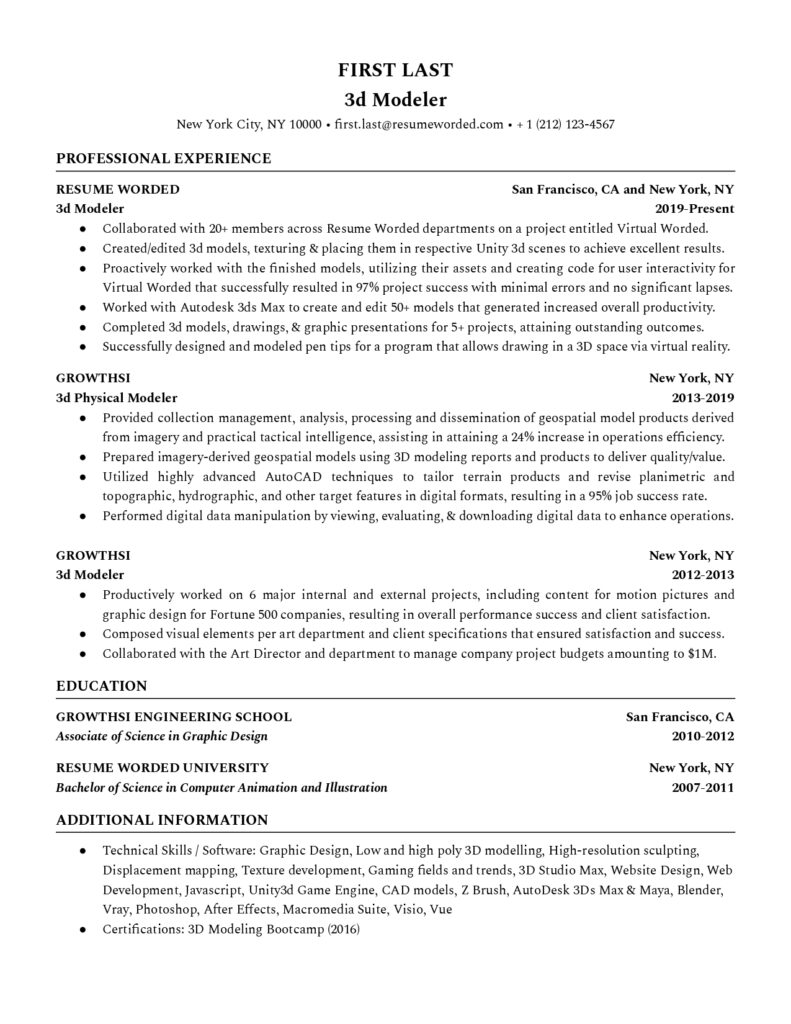
2. LiveCareer

3. QwikResume

Conclusion
When it comes to creating 3D and realistic digital objects, the knowledge and experience of a 3D modeler are indispensable. His main task is to model and create a database of objects or characters, which will later be used in architecture, cinematography, the gaming industry, and other businesses. The experts are perfectly familiar with different techniques and 3D modeling programs, they can invent 2D characters, artifacts, and environments and turn them into 3D. Since the wages of 3D modeling artists are high, the requirements for them are also considerable. That is why it is so important to undergo vocational training in a specialized institution and then constantly improve qualifications and skills.
In this article, we revealed to you the 3D modeling definition and told you which 3D modeling types are, gave you a 3D model definition and explained how to create a 3D model, and talked about all the features of the 3D modeler career. If you are looking for 3D modeling jobs, we recommend you to use such services as Upwork, Indeed, ZipRecruiter or Glassdoor. Or use Behance to find out some inspiration or ideas for 3D modeling.
Need a high end or realistic 3D model? Contact us and we will find the best solution for you!
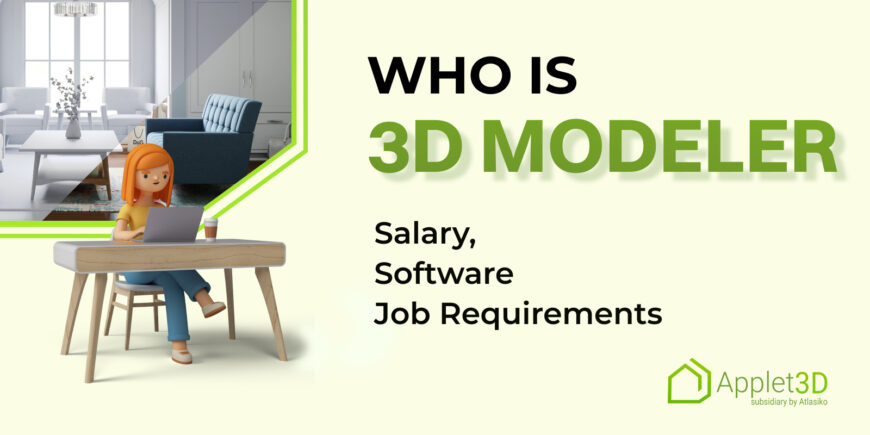



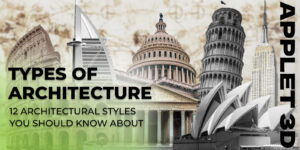




This blog post provides valuable information about what a 3D modeler does and the tools they use in their work. It also discusses the salary range for this profession and the job description, which is helpful for anyone considering a career in 3D modeling.
Thank you for providing your feedback!
Your writing style is unique compared to others I have read. Barbette Quent Dillon
Thank you so much for such words! It’s such a pleasure to hear about it from you! Was this article helpful for you?